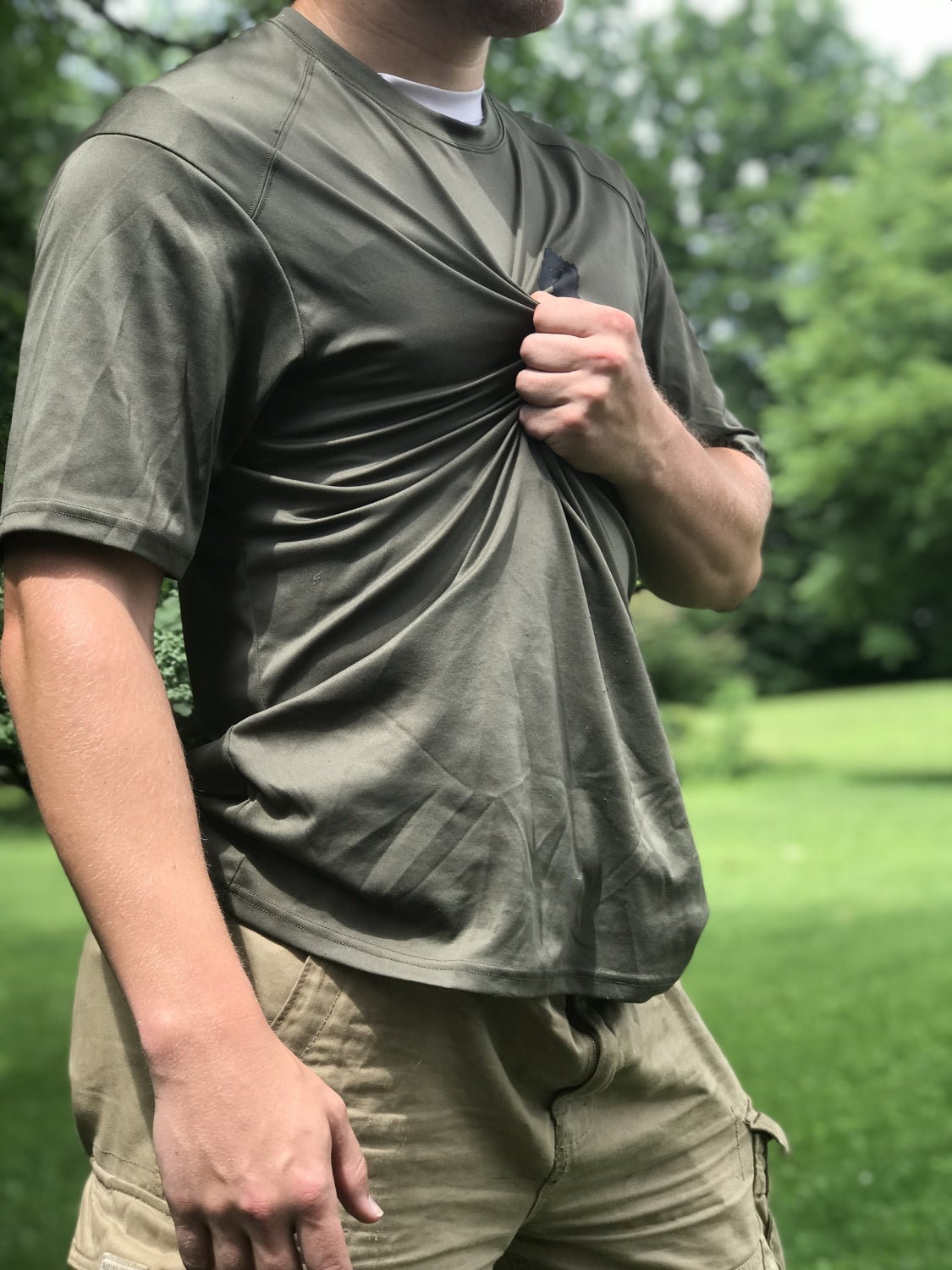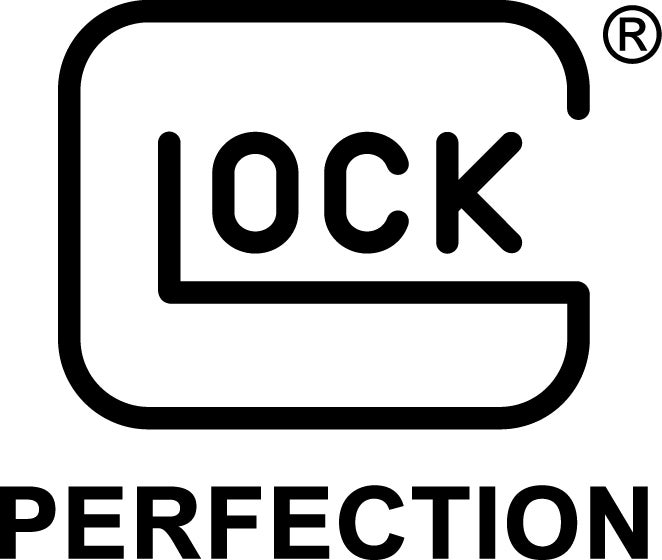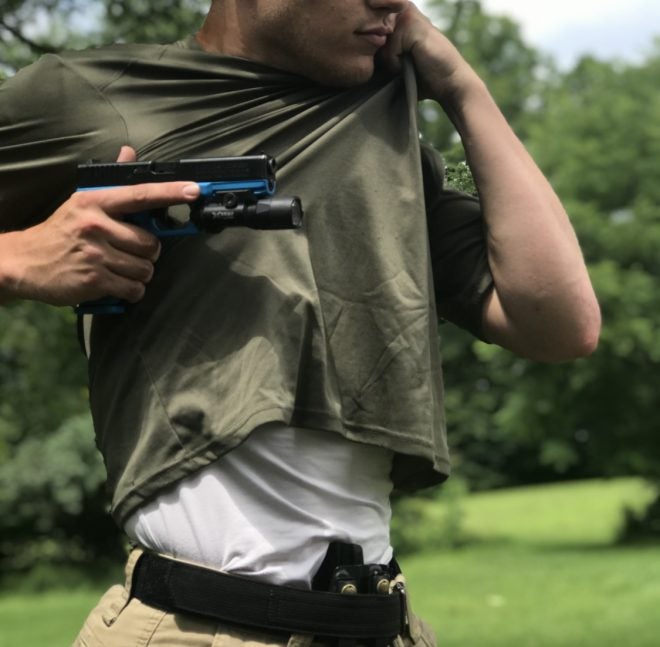Drawing From Concealment
There are endless videos on Youtube and Instagram of people drawing from concealment. Often, the fine details of removing the cover garment or tightening the belt
are missed.
The excitement of the latest red dot, new pistol, or other intricacies in the draw distract from these two factors. Both are
commonly overlooked and can be easily fixed.
In practice or a training class, you are not fearing for your life. Especially in classes where you have numerous draws, the draw stroke might get to be routine. Do not lose focus on the reason you are drawing. You will often see shooters gently grabbing their shirt. This leads to having a minimal grip on the shirt or failing to clear the cover garment on the first attempt. Slow motion videos make this easy to identify. Some clothing will be more difficult to defeat than others, but the problem is consistent. Remember, when drawing a pistol we are in a fight!

Notice the shirt is daintily gripped at the bottom, providing minimal control and requiring excess movement.
Due to the nature of the reason you are drawing, get more aggressive with your grip on your cover garment. Aggressively ripping the cover garment up and away from the center of your chest will give you positive control and reduce your failure rate. You might rip your shirt, but let’s stay focused on getting to the gun. With a claw grip ripping the shirt to the chin, we can remove the cover garment in a repetitive manner.

Notice the shirt is gripped aggressively, center chest.

The shirt was grabbed high providing a shorter path to the chin.
Belt and Holster Retention
While holsters with no retention are a problem, too much retention can also be an issue. Video your draw. Often you will see the holster rise with the gun. The problem is that the holster is not releasing the pistol the same way every time. This inconsistency can be fixed by tightening the belt. If necessary, many holsters allow the user to fine tune the level of retention. If you have difficulty gripping the pistol consistently, then adjust the ride height of the holster.

With a loose belt and tight holster retention, the holster will not release the pistol until somewhere between the red and the blue lines as shown, providing inconsistency.

With a tightened belt and proper holster retention, the holster will not move during the draw.
To perfect your draw you want consistency. If your holster is rising with the gun when you draw, you are adding an unnecessary variable to your draw. This negatively impacts the shooter’s grip.
Evaluation
Try your current draw on a timer. Then test these two factors and see what impact it has on your consistency and draw speed. If nothing else, videotaping and watching your draw in slow motion should show you many things to work on and improve.

Constantly working the balance of speed and accuracy.
Dry Fire
Not all practice requires live ammo. Drawing can regularly be done with safe, dry repetitions. It is amazing how much improvement can be made in a couple of dry practice sessions each week. Make sure in any dry fire practice session to clear your firearm and ensure there is no live ammunition in the room.
Get Training
Finally, I would recommend routinely taking a class with a reputable instructor. Not only will this help you learn ways to improve your draw stroke, but it can provide an opportunity to test and evaluate your skills. Joe Weyer at Alliance Police Training Facility offers a great course called Handgun Diagnostics with Practically Tactical providing slow-motion video analysis of the draw stroke. Every part of your draw will be carefully analyzed and you will find many ways to improve the draw.
Special thanks to Captis Photography for the photos.
TFB’s Concealed Carry Corner is brought to you by GLOCK









 Your Privacy Choices
Your Privacy Choices
